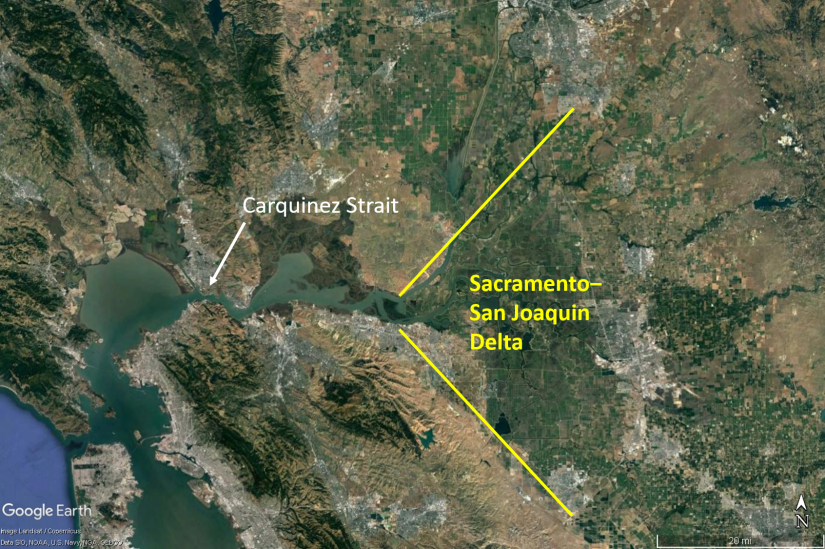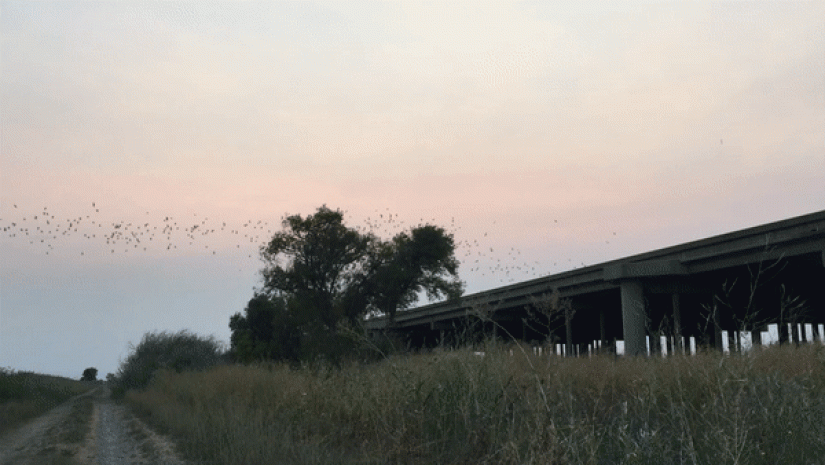
1) its approximate location and
2) that, in some way, it involved water.
Fortunately for me, the nature of my fellowship as a science communicator allowed me to learn a little about a lot over a short period of time. My monthly reports to the Delta Stewardship Council kept me up to speed on the most current Delta science, while weekly “Science Friday” social media posts required gathering tidbits of information on a wide range of themes.
So what did I learn? Below are some of the most interesting Delta “fun facts” I’ve come across thus far:
First of all, if you’re completely new to the Delta like I was, you’re probably wondering what a delta is. More commonly, it’s an area of relatively flat land where a river branches out into many parts before flowing into the ocean, creating a triangular shape (think, the Nile). However, the Sacramento–San Joaquin Delta is an inverted delta, meaning that multiple rivers (e.g. the Sacramento and San Joaquin Rivers) are actually flowing together into a single point, which, in this case, is the Carquinez Strait (leading into the San Francisco Bay).

So why’s the Delta so important? Well, for one, it provides at least some of the water supply for more than 27 million Californians and about 3 million acres of farmland. The Delta region is also home to more than 500 plant and animal species and about 500,000 people.
Speaking of California water… When it comes to precipitation, there’s really no normal. For thousands of years, California has experienced large swings between wet and dry periods. Case in point: the transition from extreme dryness during the 2012–2016 drought to the extreme wetness of the 2016–2017 winter. Scientists predict that the frequency of these extreme periods will increase over the course of the 21st century.
Several times during my fellowship, I had the opportunity to tag along for field days with different research groups. One of my favorite moments was finding a one-year-old white sturgeon while helping out with the UC Davis Suisun Marsh Fish Study. Sturgeons are the largest and oldest fish in the Delta, growing up to about 9 feet long and living up to 100 years! None only that… Their evolution dates back to the middle Jurassic period (163 to 174 million years ago).


Among other Delta inhabitants? Here’s one you might not expect… Each summer, a colony of around 250,000 Mexican free-tailed bats migrates to the Delta. No cave? No problem. These bats make their temporary home under the Yolo Causeway, a 3.2-mile long raised highway that crosses over the Yolo Bypass floodplain. Not only are these bats innovative, they can also reach speeds of up to 60 mph, fly higher than any other bat species (10,000 feet), and collectively eat thousands of pounds of insects every night.
And the list goes on and on, from unexpected benefits of flooded rice fields to an endangered butterfly found only along a 50-acre stretch of sand dunes in Contra Costa County. In eight short months, I’ve gone from knowing just two things about the Delta to knowing a whole lot—certainly more than I can count! It’s been a real privilege to get to know this very special and important California region during my time as a California Sea Grant State Fellow with the Delta Stewardship Council. I’m grateful and excited to be able to go on after this and share with others what I’ve learned.
Written by Amanda Wasserman



